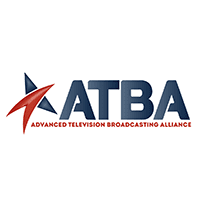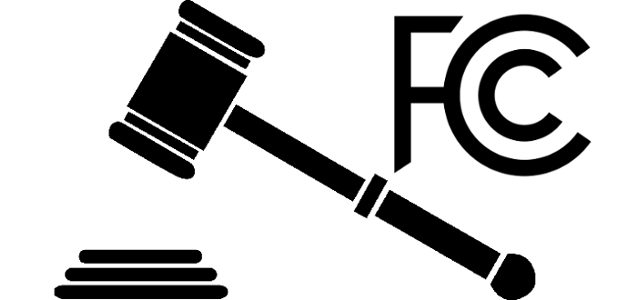On May 16, 2024, the Federal Communications Commission (FCC or Commission) released a draft Notice of Proposed Rulemaking (NPRM) that, if adopted, would seek comment on revisions to the Commission’s rules relating to the Low Power Television (LPTV) service, including Class A television, LPTV, and TV translator stations. The NPRM is set to be voted on at the Commission’s June 6, 2024 Open Meeting.
Executive Summary
By way of an overview, the NPRM would generally:
- Seek comment on whether to require top-four network-affiliated LPTV stations to comply with the same online public file (OPIF) requirements applicable to full power and Class A television stations, or alternatively, whether OPIF requirements should be applied to LPTV stations that are among the top-four TV stations in each market based on the Nielsen ratings.
- Propose to adopt procedures for LPTV stations to establish an OPIF and propose to make public inspection and political broadcasting rules applicable to all LPTV stations.
- Propose technical and operational amendments to the Commission’s rules, including whether to: (1) amend the method for calculating the maximum distance that a displaced or channel sharing station may move under the FCC’s displacement rule; (2) clarify the maximum distance that Class A and LPTV/TV translator stations may move under the Commission’s minor modification rule; (3) require that Class A and LPTV/TV translator stations specify a community of license within their station’s contour; (4) adopt minimum operating and defined minimum video program requirements for LPTV stations; (5) require stations in the LPTV service to seek authority to change designation and maintain a call sign consistent with their class of service; (6) specify requirements pertaining to emissions masks; (7) prohibit LPTV/TV translator station operations above TV channel 36; and (8) clarify the circumstances in which LPTV/TV translators stations are eligible for displacement.
We have provided a more detailed summary of the NPRM below.
Proposals & Questions Raised
OPIF Requirements
Section 73.3526 of the Commission’s rules requires that “[e]very permittee or licensee of an AM, FM, TV, or Class A TV station in the commercial broadcast services” maintain a public inspection file with material identified in the rule. (¶ 11). LPTV stations are currently only required to make certain records, including political file materials, available to the public and provide certain records to the Commission upon request. (¶ 13) If adopted, however, the NPRM would seek comment on whether:
- The FCC should extend the same OPIF requirements applicable to full power and class A television stations to top-four network affiliated LPTV stations and whether OPIF requirements should be extended to LPTV stations that are affiliated with TV networks other than the top-four (¶¶ 15-19);
- The Commission should include LPTV stations affiliated with other national TV networks in the requirement to maintain an OPIF or whether the agency should instead apply the OPIF requirement to LPTV stations that are among the top-four TV stations in each market based on Nielsen ratings (¶¶ 15, 20);
- There are any additional ways of differentiating among LPTV stations for purposes of imposing OPIF requirements (¶ 15); and
- These proposals appropriately accommodate small entities. (¶ 27).
The NPRM would also propose—if the Commission were to require that certain LPTV stations comply with the OPIF requirements in Section 73.3526—issuing a Public Notice with an initial/draft list of those LPTV stations that fall within the affected group based on generally accepted industry data. (¶27). The Media Bureau would issue a subsequent Public Notice that includes a final list of LPTV stations subject to the OPIF requirement in accordance with the Commission’s rules and set a deadline by which each LPTV station must begin to maintain the OPIF on the Commission’s OPIF platform. (¶ 28).
Notification Requirements
The NPRM would propose to require that LPTV stations notify the Commission within 10 days of a change in their affiliation or ranking that occurs after the Media Bureau issues a final list of LPTV stations subject to the OPIF requirement. The LPTV station would be required to include the date the station’s affiliation or ranking changed, along with the details of the station’s change in circumstances, in the notice. (¶ 28). The NPRM seeks comment on various aspects of this notification requirement, including:
- How this procedure should change if the Commission were to require stations to maintain an OPIF in perpetuity once they are required to do so. (¶ 28).
- Whether the Commission should adopt a waiting period before imposing an OPIF requirement on a station that becomes a top-four ranked station or drops out of the top-four to ensure that the change in the market ranking is not short lived. The Commission would also request comment on the length of the waiting period. (¶ 29).
Proposed Recordkeeping and Political Broadcasting Obligations Applicable to All LPTV Stations
LPTV stations are currently required to “maintain adequate station records, including the current instrument of authorization, official correspondence with the FCC, contracts, permission for rebroadcasts, and other pertinent documents.” Section 74.78(b) of the Commission’s rules also requires LPTV stations to retain certain information about tower lighting. (¶ 30). The Commission proposes the following changes to these requirements:
- Specifying where LPTV stations must retain records not included in its OPIF. The Commission’s proposed revisions would also specify where records can be accessed by the public. (¶ 30).
- Revising the inspection requirement to clarify that the rule applies to both translators and LPTV stations. (¶ 31).
- Updating the list of political programming rules applicable to LPTV stations to align with existing and longstanding statutory requirements in Sections 312 and 315 of the Communications Act. To this end, the NPRM would seek comment on whether it should specify that LPTV stations are subject to Sections 73.1941 through 73.1944 of the Commission’s rules in addition to Section 73.1940. (¶ 32).
The NPRM would seek comment on whether there is any reason to exempt LPTV stations not subject to an OPIF requirement from a public inspection requirement. (¶ 31). Additionally, the NPRM would request comment on whether there are reasons translators should be subject to a public inspection requirement and not LPTV stations. (¶ 31).
Proposed Changes to Section 73.3526
The Commission proposes to correct cross references and other inaccuracies, clarify existing requirements, establish filing frequency for Class A stations to certify they have met their ongoing flexibility requirements, and require Class A and LPTV stations to disclose time brokerage agreements and joint service agreements. (¶ 33).
Revisions to Rules Concerning Relocation of Facilities
The NPRM would seek comment on amending the displacement and channel sharing rules to eliminate the reference to a station’s community of license (COL) and incorporate the language of the minor change rule that measures distance from the reference and coordinates of the “[e]xisting station’s antenna location.” (¶ 39) The NPRM would also request comment on clarifying the distance that Class A and LPTV/TV translator stations are allowed to move in a single minor modification application or a displacement application, proposing to remove the imprecise miles to kilometers conversion and instead solely state that facility relocations may be no greater than 48.3 kilometers. (¶ 40)
The NPRM would also propose to establish mandatory COL designations and coverage requirements and seek comment on several aspects of these requirements, such as whether Class A and LPTV/TV translator stations should be required to designate a COL whose boundary at least partially overlaps with the station’s “protected service contour.” (¶ 42). The NPRM would also seek comment on whether stations should be required to serve their COL for a minimum period before designating it as the station’s COL (¶ 43).
Minimum Operating Hours for LPTV Stations and Minimum Programming Requirements
In the NPRM, the Commission would propose adopting minimum operating hours for LPTV stations and seek comment on whether LPTV/TV translator stations should be required to certify regarding their minimum operating hours on certain applications. (¶ 45). Specifically, the NPRM would propose that all LPTV stations be required to operate no less than 14 hours per calendar week and seek comment on whether there are alternatives to this benchmark that will satisfy the goal of “ensur[ing] that stations have a clear awareness of their public interest obligations to the viewers they have been licensed to serve, and prevent[ing] warehousing and underutilization of spectrum.”( ¶ 46). Finally, the NPRM would propose to require all LPTV/TV translator licensees to certify in any application for minor or major modification of a licensed facility and in their license renewal applications whether the station has complied with its minimum operating requirement over the course of the current license term. (¶ 50).
If adopted, the NPRM would also clarify that, for LPTV/TV translator stations, visual transmissions of test patterns, slides, or still pictures accompanied by unrelated aural transmissions may not be counted for purposes of complying with any minimum operating requirement. (¶ 51).
Class A, LPTV, and TV Translator Station Designations and Call Signs
The NPRM would propose the following revisions concerning service classification:
- Requiring that stations in the LPTV service that seek to change their designation from LPTV to TV translator, and vice versa, be required to seek Commission authority by way of a license modification application to make such a change, and allowing stations in the LPTV service to change their station designation not more than once every 12 months (¶ 52);
- Requiring that all stations with the LPTV designation, regardless of how the station is operated, comply with EAS rules (¶ 55);
- Clarifying that a station formally designated in the Commission’s database as a TV translator is not required to comply with the Commission’s Part 11 requirements (¶ 55);
- Automatically modifying the four-letter LPTV call sign when a station converts from LPTV to TV translator status so as to be consistent with the Commission’s TV translator call sign rule (¶ 56);
- Requiring that all Class A and LPTV stations have a four-letter call sign with the suffix “LD” for LPTV stations and “CD” for Class A stations. Any station that modifies its status from a TV translator to LPTV after the effective date of the proposed rule would be required to submit a request for a new four-letter call sign (¶ 57);
- Automatically changing the call sign of a Class A station that reverts to LPTV from “-CD” to “-LD” to reflect its LPTV status (¶ 57);
- Providing all Class A and LPTV stations 90 days from the NPRM’s effective date to designate a four-letter call sign with the correct suffix. During this period, the Commission would waive the fee associated with an initial call sign request by a station to modify its call sign in order to come into compliance with the proposed rule. (¶ 57)
Alternatively, the NPRM would seek comment on whether the Commission should grandfather existing LPTV and Class A call signs that are not in compliance with the proposed new rule. (¶ 58).
Channel 14 Emission Masks
To further reduce the potential for interference to Land Mobile Radio (LMR) facilities in the 460-470 MHz band, the NPRM would propose that new and modified channel 14 Class A and LPTV/TV translator stations (Channel 14 LPTV Station) be required to use a “full service” or “stringent” emission mask; a simple emission mask would be prohibited. (¶ 59). Under this proposal, a currently-licensed Channel 14 LPTV Station would not be required to make a change to its existing licensed facility and would only be required to implement filtering with a superior emission mask when proposing modifications to its facility that would change the station’s current service contour or to address interference caused to an LMR facility. (¶ 59).
The NPRM would also propose prohibiting any LPTV/TV translator stations from operating above channel 36. (¶ 63)
Additional Class A, LPTV, and TV Translator Rule Clarifications
The NPRM would also propose changes to the Commission’s rules to further clarify certain Class A and LPTV/TV translator technical rules and policies. This includes the following:
- Requiring that all transmitters in a Class A or LPTV/TV translator station Distributed Transmission System facility utilize the same emission mask. To this end, the Commission would tentatively conclude that all three emission masks found in the agency’s rules are permissible. (¶ 65).
- Applying the same requirements to LPTV/TV translator stations as full-power and Class A TV stations when entering into an interference agreement. (¶ 66). This includes entering into a signed written agreement that is submitted with the application and making clear that agreements may include the exchange of money or other consideration between entities. (¶ 67).
- Allowing stations operating pursuant to interference agreements, or that are unilaterally accepting interference from another station, to maintain those agreed upon interference amounts when modifying a facility so long as applications involving stations with agreements remain compliant with those agreements. (¶ 66). A station seeking to modify its facility would be required to demonstrate that no additional interference beyond what was previously caused or accepted will occur as a result of the proposed modification. (¶ 68). Under this proposal, Media Bureau staff may request that a new interference agreement be entered into or that the modification application be amended to resolve any interference above the permitted interference threshold. (¶ 68, n. 244).
- Codifying that a one square kilometer grid resolution should be the maximum permitted in evaluating the interference to Class A and LPTV/TV translator facilities, which was a policy announced in an earlier LPTV DTV Order. The Commission noted that commenters that believe that a different maximum grid resolution should be utilized should explain why it will provide a better basis for evaluating interference involving LPTV/TV translator stations. (¶ 69).
These additional proposed revisions would also include updates to the Commission’s displacement rules aimed at minimizing service disruptions. Specifically, if adopted, the NPRM would propose:
- Eliminating the 30-day public notice period for displacement applications found in Section 74.787(a)(4) of the Commission’s rules. (¶ 70).
- Amending the Commission’s rules to specify that displacement applications based on amendments to the Table of TV Allotments cannot be filed until the Report and Order granting the channel substitution and amending the Table of TV Allotments is effective. Under this proposal, displacement applications that are filed before the Report and Order granting the channel substitution and amending the Table of TV Allotments is effective will be dismissed without prejudice. (¶ 72).
- Enumerating in the displacement rule the precise circumstances that qualify LPTV/TV translator stations to seek a displacement channel. The current displacement rule states, in part, that an LPTV/TV translator station “which is causing or receiving interference or is predicted to cause or receive interference to or from an authorized TV broadcast station or allotment or other protected station or service, may at any time file a displacement relief application for change in channel . . . .” (¶ 73) (emphasis added). With this in mind, the NPRM would propose to clarify that:
- “[C]ausing or receiving interference” refers to actual interference received by a TV broadcast station (i.e., a full power television station) from an LPTV or TV translator station. In order for an LPTV/TV translator station to qualify for displacement relief based on actual interference caused to a TV broadcast station, there must be at least: (1) a single report of actual interference received by a TV broadcast station within its community of license, or (2) multiple reports of actual interference to a TV broadcast station within its protected contour. The NPRM would seek comment on how many reports of actual interference should be required in each instance and what information should be provided to validate such claims. (¶ 74).
- With respect to “predicted” interference “caused” to a TV broadcast station, the predicted interference would have to exceed the 0.5% de minimis interference threshold specified in Section 74.793(e) of the Commission’s rules to qualify the station to file a displacement application. With respect to predicted interference “received” from a TV broadcast station, the predicted interference would have to exceed the 2% interference threshold specified in Section 74.793(h) of the Commission’s rules to qualify the station to file a displacement application. (¶ 75).
- “[O]ther protected station or service” includes two specific situations beyond interference to/from an authorized TV broadcast station that would qualify an LPTV/TV translator station to seek a displacement channel: (1) interference to LMR facilities; and (2) interference to/from protected television facilities in Canada and Mexico. (¶ 76).
- Interference caused to a TV translator input channel is a basis for displacement. (¶ 77).
Finally, the NPRM would propose to make the Commission’s part 73 “program test authority” rule applicable to LPTV/TV translator stations, make a series of ministerial corrections to Parts 73 and 74 of the Commission’s rules, and seek comment on the benefits and costs associated with the NPRM’s proposals. (¶¶ 79-84).
If the draft NPRM is adopted, comments will be due 30 days after publication in the Federal Register and reply commence will be due 60 days after publication in the Federal Register.





